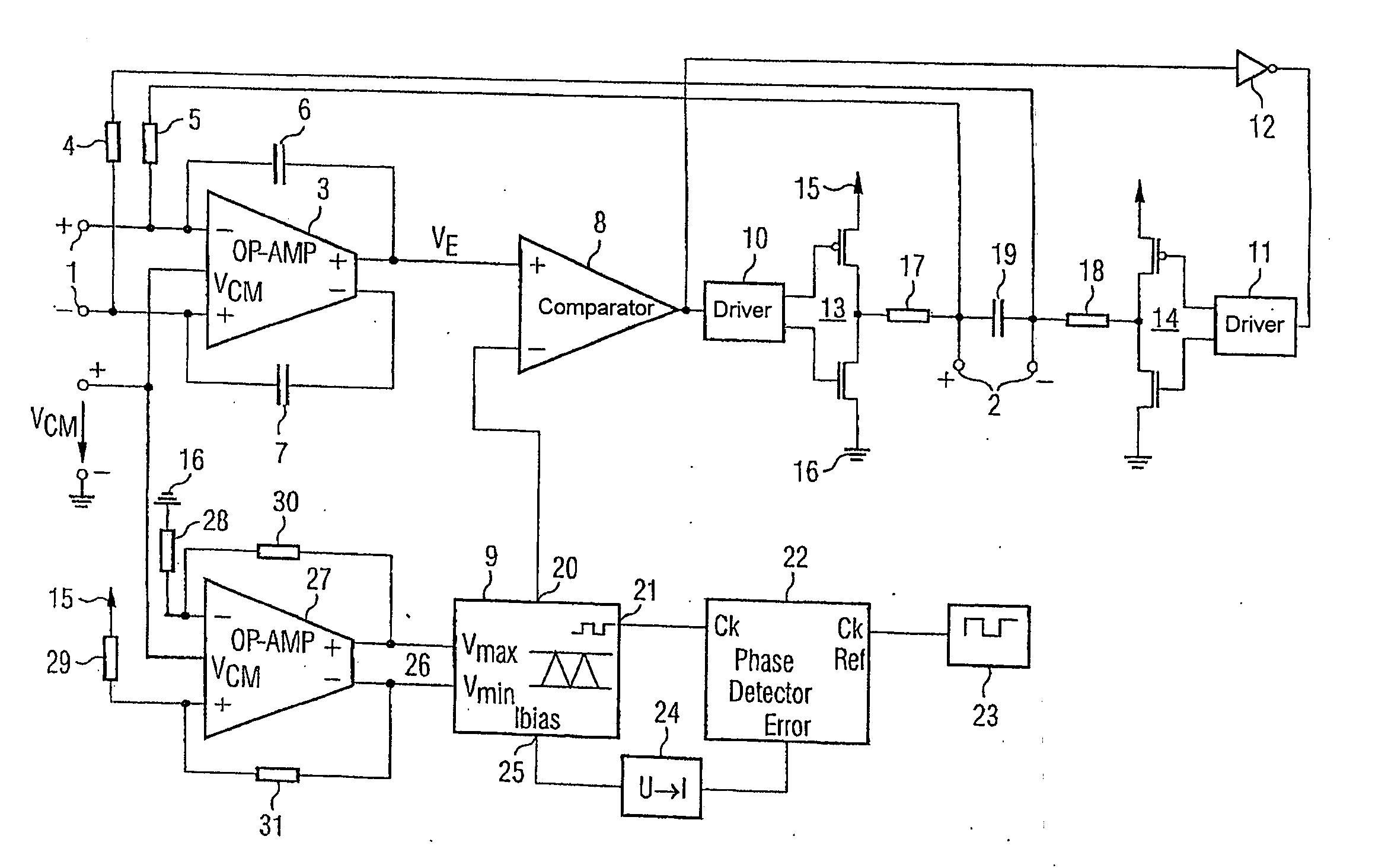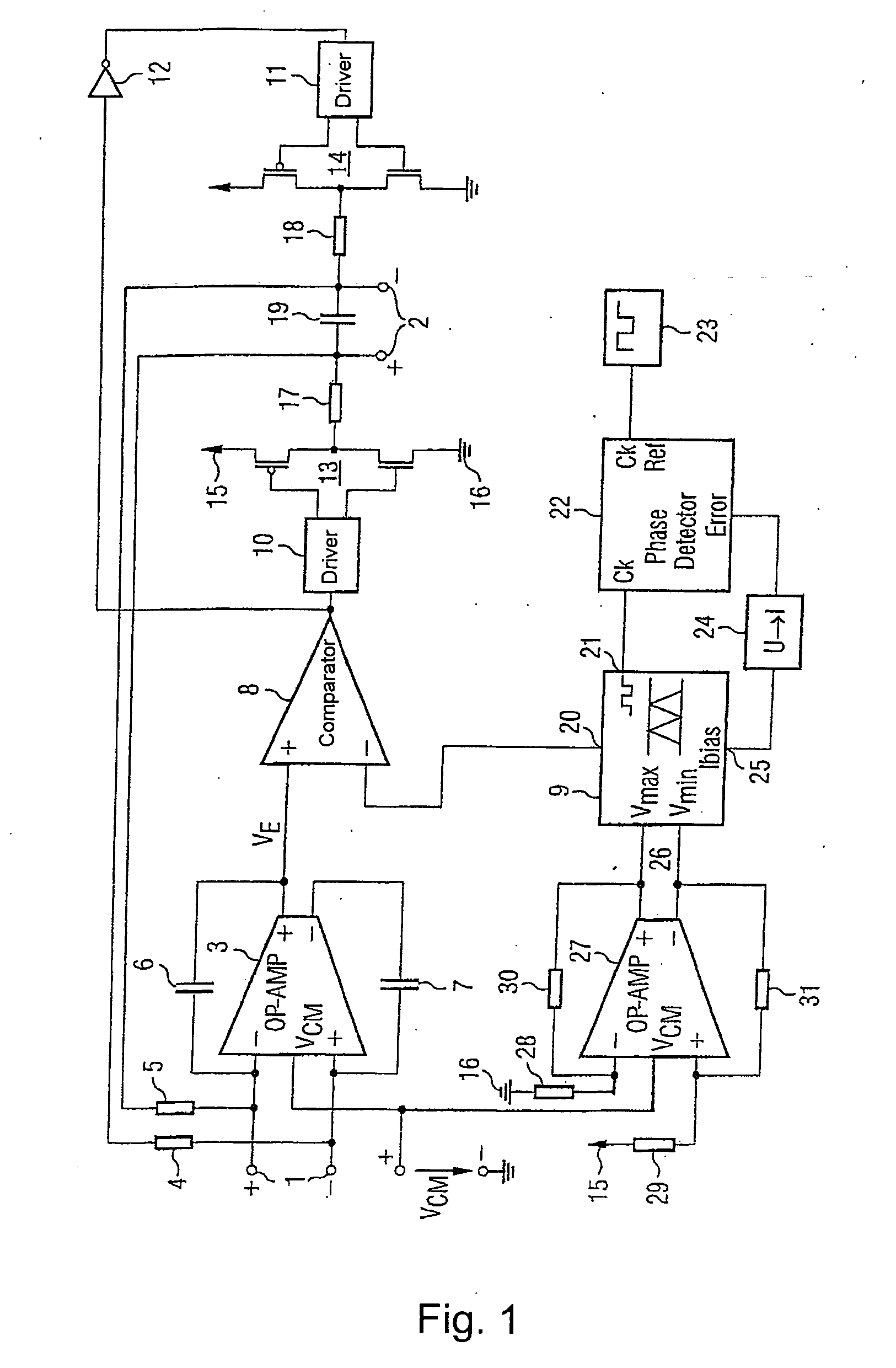Amplifier circuit
- Summary
- Abstract
- Description
- Claims
- Application Information
AI Technical Summary
Benefits of technology
Problems solved by technology
Method used
Image
Examples
Embodiment Construction
[0025]FIG. 1 shows an amplifier circuit based on the present invention using a block diagram. This circuit comprises an input 1 for supplying a useful signal to be amplified which is in the form of a symmetrical input with a pair of differential input terminals. The signal amplified using the present amplifier circuit, which signal is derived from the signal applied to the input 1, can be tapped off at the output 2, which is likewise symmetrically in the form of a pair of output terminals.
[0026] The input 1 has an amplifier 3 connected to it which forms a differential signal from the signal difference between the signal applied to the input 1 and the signal provided at the output 2. This differential signal is provided at the symmetrical input of the operational amplifier 3. For this, the pair of output terminals 2 is connected to the input of the amplifier 3 via a respective resistor 4, 5. In addition, the two output terminals of the operational amplifier 3 are connected to the tw...
PUM
 Login to View More
Login to View More Abstract
Description
Claims
Application Information
 Login to View More
Login to View More - R&D
- Intellectual Property
- Life Sciences
- Materials
- Tech Scout
- Unparalleled Data Quality
- Higher Quality Content
- 60% Fewer Hallucinations
Browse by: Latest US Patents, China's latest patents, Technical Efficacy Thesaurus, Application Domain, Technology Topic, Popular Technical Reports.
© 2025 PatSnap. All rights reserved.Legal|Privacy policy|Modern Slavery Act Transparency Statement|Sitemap|About US| Contact US: help@patsnap.com



